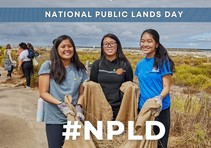
Public lands in need of your helping hands
Join thousands of other Americans across the country along with the Bureau of Land Management and the National Environmental Education Foundation as they celebrate National Public Lands Day on Saturday, September 24th.
To find a volunteer event near you, visit the NEEF website.
|
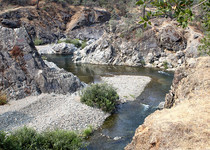
National Public Lands Day projects at Clear Creek
Volunteers who love their public lands are invited to celebrate National Public Lands Day, Saturday, Sept. 24, in a cleanup day at the Clear Creek Greenway just south of Redding. (BLM CA News Release)
|
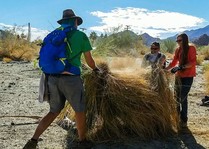
Public land volunteer opportunities
In managing and protecting America's public lands, the Bureau of Land Management relies on the dedication of many hardworking volunteers and is grateful for their service. To find out how to give back to your public lands by volunteering, call your local BLM Field office or visit: Volunteer.gov
|
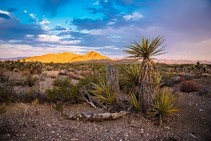
September is Wilderness month
Bureau of Land Management California public lands provide 155 diverse and beautiful reasons to celebrate Wilderness Month in September - this includes 92 Wilderness Areas and 63 Wilderness Study Areas. (BLM Instagram)
To learn more about these designated wilderness areas, visit our website.
|
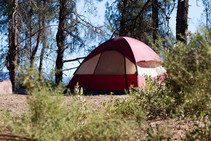
Recreate Responsibly: Camping Edition
When we set up camp in a tent, cabin, RV, or other similar structure, we impact the places we stay. Whether on public or private land, in a park or a forest, in the desert or on the beach, or anywhere else, let's work together to recreate responsibly while camping. (Recreate Responsibility)
|

At your park
Urban and suburban green spaces are vital havens for many species such as migratory birds, urban mammals like bats, foxes, and deer, and important insects like butterflies and bees. Access to urban green space is associated with better memory development in children and better health outcomes for city dwellers. (LNT.org)
|
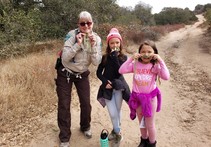
Hiking Fort Ord National Monument
Ranger Tammy led a Blue Zones Project hike starting at Creekside Terrace Trailhead at Fort Ord National Monument, which is a 3.5 mile hike. She taught hikers about interesting flora and fauna along the trail as well as the history about the monument. Looks like they all had fun! (BLM CA Facebook)
|

Night race at Fort Sage OHV Area
Fort Sage OHV Area was the site of a unique event hosted by Lassen Motorcycle Club which held a night race! Riders used additional lights to illuminate the course which made for some spectacular views for spectators too. (BLM CA Facebook)
|

Hike-in at Piedras Blancas wraps up
Piedras Blancas Light Station wrapped up its Hike-In-Wednesday series with a tremendous turnout! Almost 250 people came out to hike, learn about the light station, enjoy good weather and fortunately got a wonderful show from a group of feeding humpback whales. (BLM CA Facebook)
|

Sharing fire prevention awareness
The Bureau of Land Management Applegate Field Office, Modoc National Forest, and Cal Fire's Lassen-Modoc Unit teamed up to bring fire prevention awareness and education to the visitors at the 101st Modoc District Fair in Cedarville. (BLM CA Facebook)
|
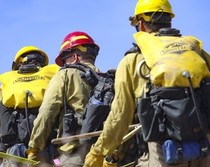
Addressing wildfires together through widescale mitigation and personal precautions
Nearly 9 out of 10 wildfires are caused by people. Even small precautions taken by individuals can play a significant role in reducing wildfires. Together with ongoing work by the Interior Department and our partners to address our new norm or more extreme wildfires, these efforts will improve our ability to live with fire. (DOI Director's Report)
|
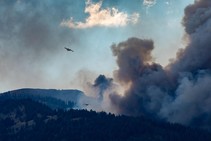
The National Multi-agency Coordinating Group increased the national preparedness level to 4
This is due to significant fire activity occurring in multiple geographic areas and an increase in requests for national resources. This is the latest date that the national preparedness level has increased in over a decade. (GACC Website)
|
Have you checked out BLM California's Wildfire Dashboard? At a glance you'll be able to get updates on large fires in California, view smoke impacts, check fire restrictions and find other helpful wildfire links. Bookmark it now!
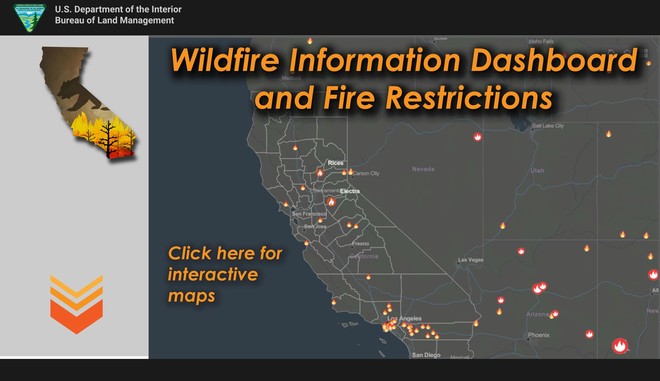
BLM California fire restrictions or temporary public land closures are used to reduce the risk of wildfires and protect the public. Often times these preventative measures focus on human-related activities, such as campfires, off-road driving, equipment use and recreational target shooting, since human-related activities are the number one cause of a wildfires. View all current fire restrictions and fire orders on our interactive maps or the BLM Fire Restriction webpage.
Criteria to build a campfire, where allowed, outside of developed campgrounds:
- maintain a five-foot diameter area cleared to bare soil and free of any overhead flammable materials in all directions around the campfire,
- have on hand a functioning round-point shovel, with an overall length of at least 35 inches, that can be easily accessed within a reasonable amount of time in response to a fire ignition,
- possess a valid California Campfire Permit, available free of charge at CAL FIRE's website.
Fireworks are not allowed on BLM-managed public lands.
How many ears does a praying mantis have?
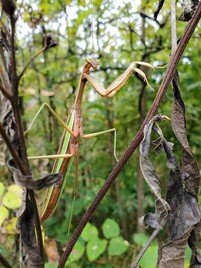
1 or 2
Scroll down for answer!
Photo courtesy of CDFW
|
Here's a few more open positions:
Realty Specialist - GS 12, Permanent (2 vacancies)
Fire Helicopter Crew Supervisor - GS 9, Permanent

America the Beautiful: Conserving 30 Percent of Lands and Waters by 2030
"America the Beautiful" builds on the nation’s stewardship traditions and strives to give every person the chance to experience the joys and opportunities that America’s rich and vibrant public lands and waters provide. Learn more about this program on the DOI website.
|
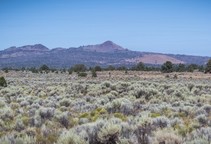
Interior Department completes removal of “Sq___” from federal use
Interior today announced the Board on Geographic Names has voted on the final replacement names for nearly 650 geographic features featuring the word sq___. (DOI News Release)
|
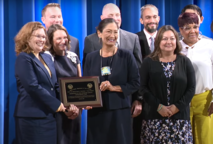
This Week at Interior - September 9
Interior's annual Convocation Awards recognize employees who go above and beyond; September 11th remembrance activities will be held at the Flight 93 National Memorial in Shanksville, Pennsylvania; the Secretary visits sacred Tribal lands in Nevada; the Board on Geographic Names votes to replace the names of nearly 650 geographic places using a derogatory word. (DOI YouTube)
|
|